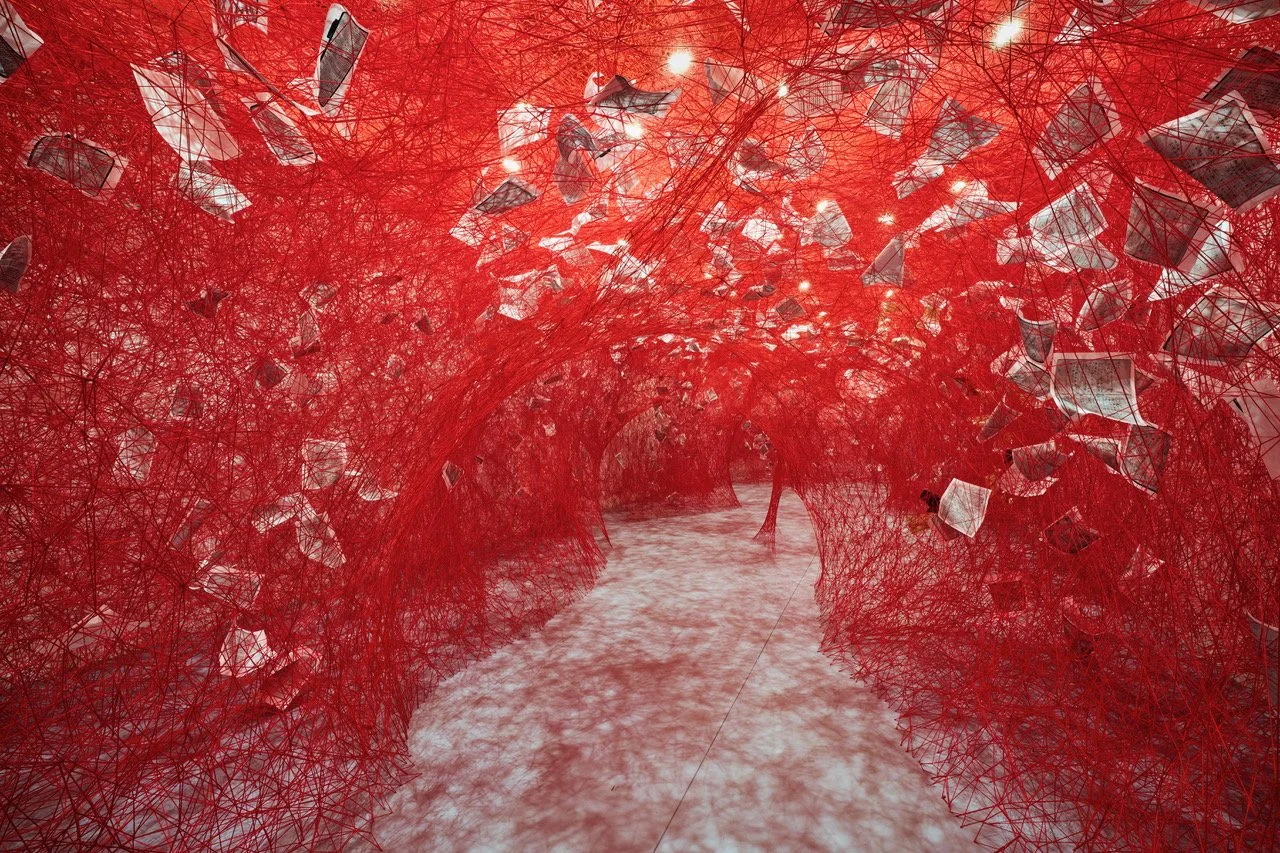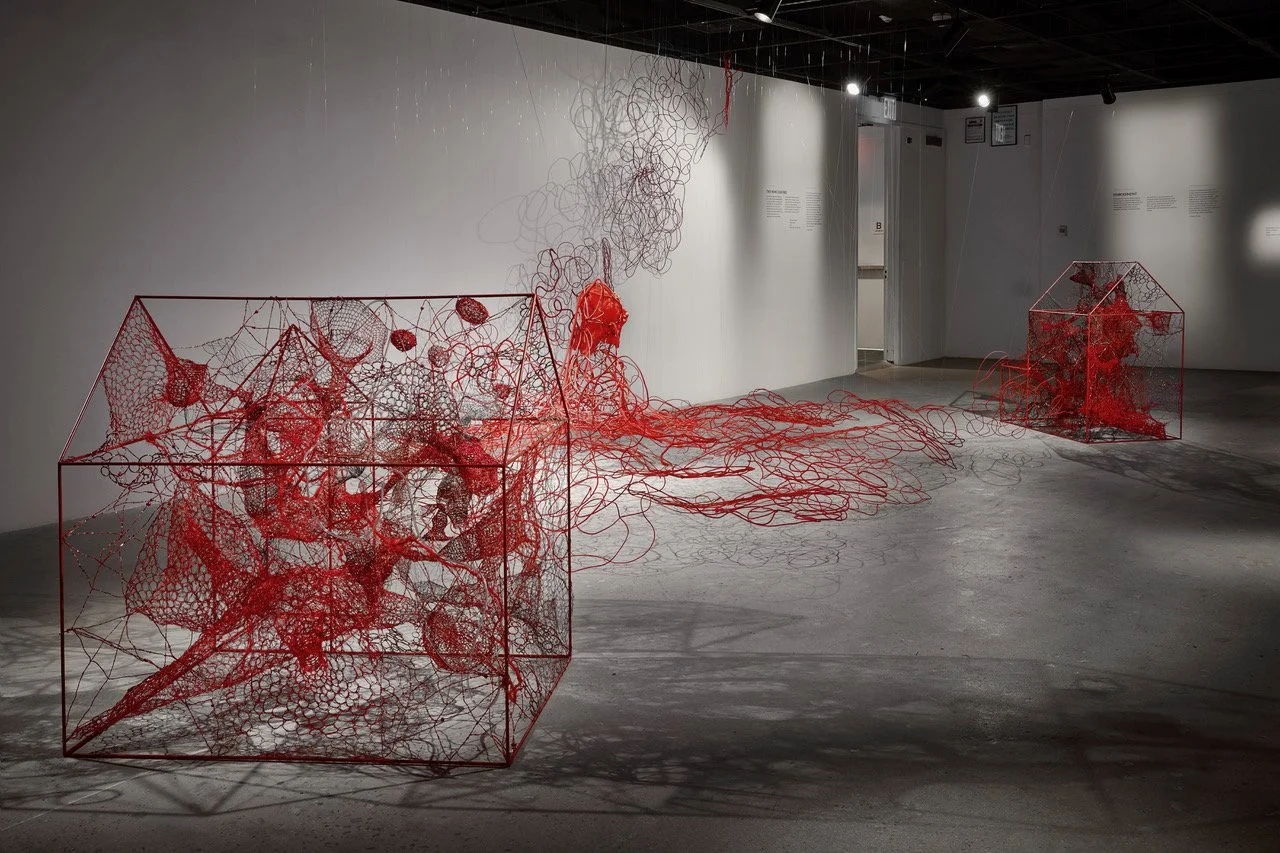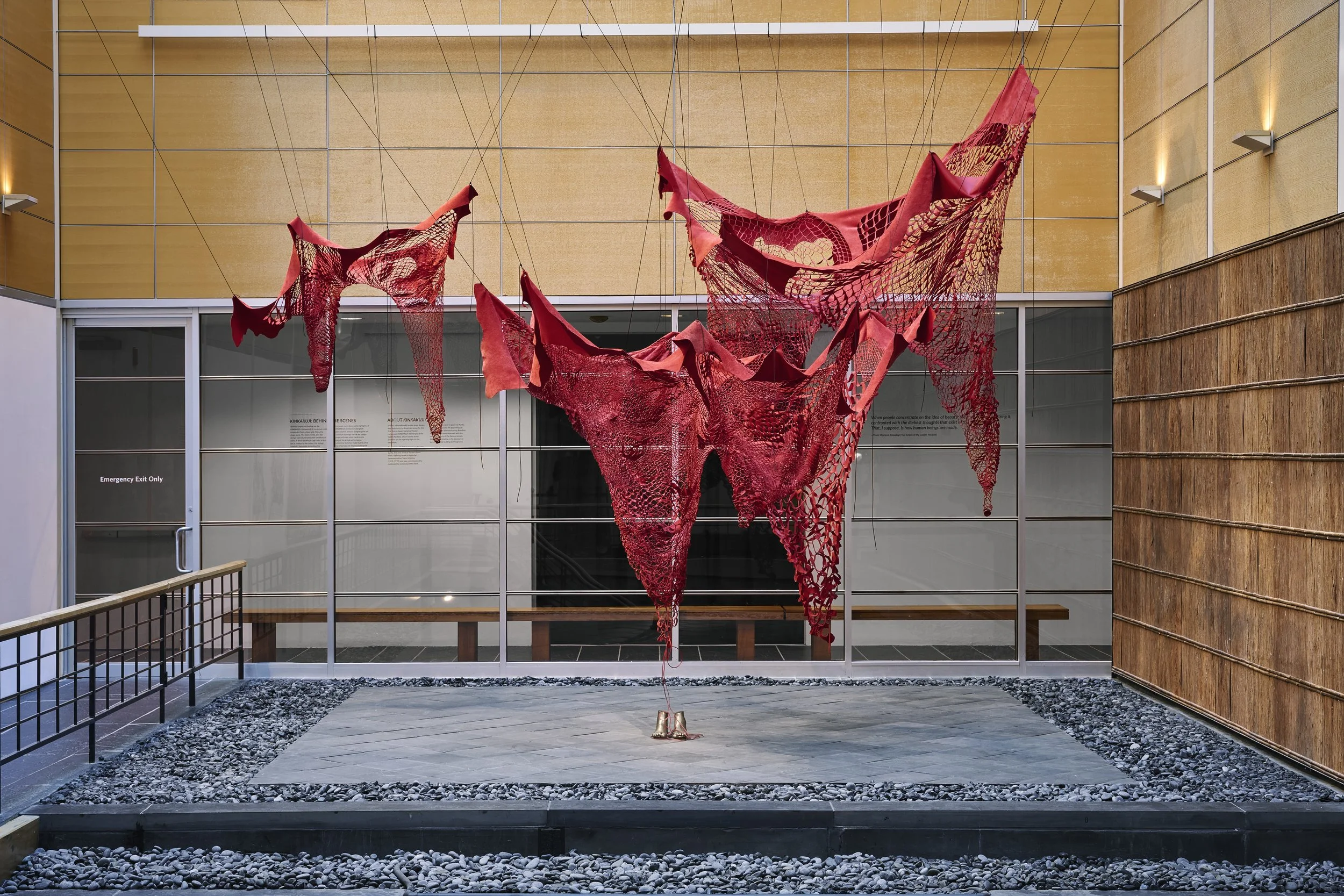Art as Place: Chiharu Shiota’s “Two Home Countries”
In contemporary artist Chiharu Shiota’s short film Wall (2010), we see a naked woman lying hunched to her side on the floor of an anemically bright white room. Clear tubes sprout from her torso and extremities, tangled and curling over themselves. Suddenly, her body convulses as it expels blood through the tubes. Her circulatory system becomes exposed, cascading from her body, as the steady heartbeat of a fetus reverberates through the dimensionless space. The film’s subject is Shiota herself, and true to her background as a performance artist mentored by Marina Abramovic and Rebecca Horn, she presents herself as a tortured spectacle, her own block of sanguinary marble.
In Wall, Shiota’s body functions as the incubator of an unborn child and a repository of her own organs, as the home of two entities, neither of which is in her control, and actively works against her. Shiota’s oeuvre, spanning over thirty years and ranging from glass sculpture to theater production designs, embodies this fraught relationship with the notion of home. Raised in Japan in the 1970s and later adopting reunified Germany as her creative and familial home, her art conveys dichotomies of belonging and alienation from both her native and chosen homes, almost serving as her third nationality, transcending geography, history, and culture. Her latest solo exhibition, Two Home Countries at Japan Society, is a compelling exploration of this throughline as it manifests in her performance art, installations, sculptures, production designs, and textiles.
The exhibition begins on an appropriately theatrical note, with her installation Diary (2025), consisting of thousands of red threads stretching across a corridor, forming an eerie, unfurnished pathway of cascading red waves. From within the installation, strings surround the viewer, collectively forming curved walls, claustrophobia-inducing archways like chambers of the heart. From outside the corridor, the red strands glow and pulsate against the entrance’s white doorframe, an effect as compelling as it is repulsive—at once an enticing forbidden entrance and a gaping wound. Shiota’s red lines are a symbolic staple of her work, recalling the tubes from Wall and prior installations like 2015’s Key in Hand and 1994’s From DNA to DNA. They invoke both physiological circulation and tangible traces of her essence, while also materializing invisible connections we form with our friends, families, and homelands, regardless of how fragile or imperfect these relationships may be.
The titular Diary refers to diaries of Japanese and German World War II soldiers and civilians, reproductions of which punctuate the installation’s crimson fiber archways, trapped like insects in a spider’s web and pages outstretched like butterfly wings. These diaries, representative of both of Shiota’s nationalities, mirror another function of Shiota’s sheaths of threads—their negative spaces, some large and others microscopic. They appear almost cosmic, emphasizing what she refers to as “our cumulative memories,” our scattered remnants that fall beyond the purview of our connections. “When the body is gone, the objects which surround them remain behind,” underscores Diary’s introductory didactic. Beyond the corridor, Shiota’s red threads extend into her sculptures, like the titular Two Home Countries (2025), a contourless dress worn by an invisible body tethered to wireframe houses. Both structures are composed of The Wall’s thick, red tubes with an added element of red wire, its lustered, spindly surfaces contrasting beautifully with the tubes’ rubbery opacity. The images of clothing and shelter are emblematic of both objects and identities of place, echoing Diary’s incorporation of personal expression and The Wall’s equivalence of body and art, and by extension, body and home.
In much of her work, Shiota thinly shrouds her pain in tangible but permeable, woundable matter. In her Cell sculpture series, for instance, we see multiple oozing, glistening clusters of red and black glass cells encased in netted wire and transparent clusters of glass bubbles. Individually, they resemble still lives, inert and unrelated. Collectively, lined against a wall, they are a scrambled, disorienting sequence, volatile organisms increasing and dividing unpredictably. They invoke the multiplication and mutation of human cells, or cancer, another instance of which the human body attacks itself and disrupts its own home, which Shiota herself battled and survived in 2005 and 2017.
The exhibition concludes with Shiota’s recent sculpture Beyond my Body (2025), which features swaths of red leather suspended dramatically above a pair of bronze bare feet. The leather, latticed and sutured into textures varying from fish scales to animal hide, forms loose drapes and gaping wounds, dangling like free-falling limbs. A few thin strands of red leather encircle the feet, vestiges of the artist’s physical body. Even if Shiota does not have a singular, definitive country to call home, she can always find physical, emotional, and temporal refuge in her artwork.
Chiharu Shiota: Two Home Countries is on view at the Japan Society from September 12, 2025, through January 11, 2026.




